As I stand before the fire extinguisher, its silent presence contrasts with the potential chaos it can quell. But how does one truly ensure its readiness? By understanding the nuances of inspection, we unlock the key to fire safety.
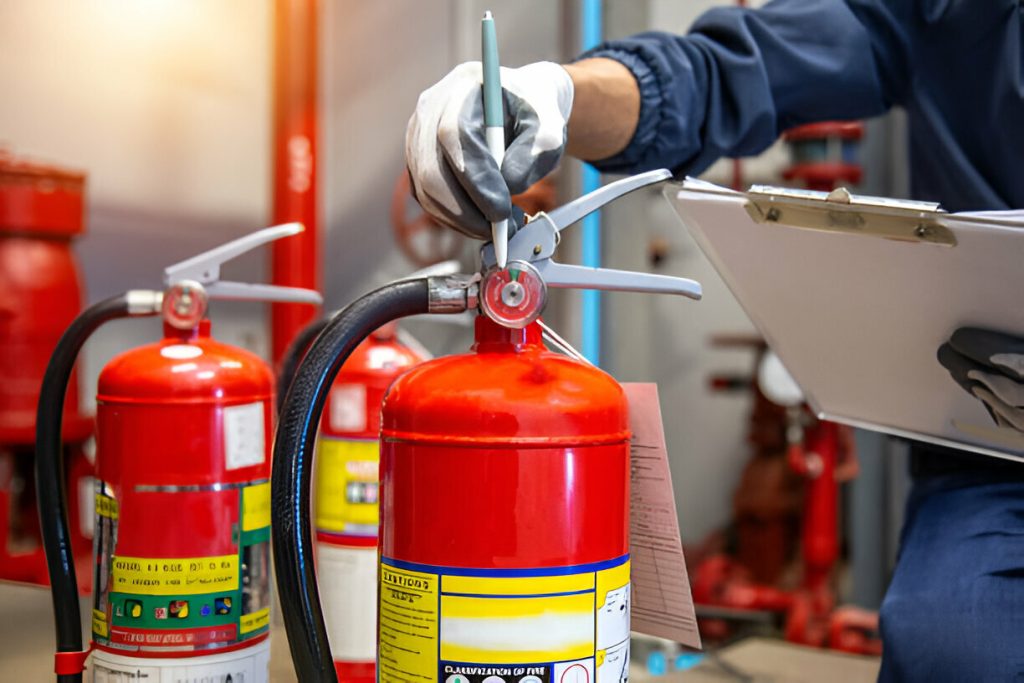
Join me as we unravel the intricacies of examining this humble yet powerful tool, paving the way for a secure environment. Let’s embark on this journey together, where vigilance and knowledge stand as our allies in the battle against fire hazards.
Fire Extinguisher Inspection Checklist
When inspecting a fire extinguisher, the checklist plays a crucial role in ensuring its operational readiness and effectiveness in case of a fire emergency. Inspection techniques involve verifying the extinguisher’s visible and unobstructed location, checking the inspection tag for recent professional inspection, confirming the pressure gauge is within the green operational zone, inspecting the tamper seal for damage, and ensuring the locking pin security.
Maintenance tips include lifting the extinguisher to check if it’s full with the appropriate anti-fire agent. Safety precautions entail ensuring all safety mechanisms like the tamper seal, pull-pin, and pressure gauge are intact. Common issues to watch for during inspections are broken tamper seals, damaged pressure gauges, or missing locking pins.
Training programs are essential to educate individuals on the proper use and maintenance of fire extinguishers, emphasizing the importance of regular inspections to ensure their functionality.
Fire Response Procedures
During a fire emergency, promptly evacuate the building and call 9-1-1 for assistance if the fire is large or uncontrollable.
Adhering to fire safety protocols is crucial during such situations. It’s important to understand when to use a fire extinguisher – primarily for small, containable fires. Individuals should prioritize safety and evacuate immediately for larger fires. Engaging in fire extinguisher training enhances preparedness and response effectiveness. Familiarizing oneself with fire extinguisher guidelines ensures proper handling in emergencies.
Campus fire safety plays a vital role in educating individuals on effective fire response procedures. Implementing the ‘Fight or Flight’ response is key in determining whether to combat a fire or evacuate. Regular practice of emergency evacuation plans and fire drills is essential.
Fire Damage Restoration Services
Reynolds Restoration Services offers professional assistance in restoring properties to their pre-loss condition after fire damage. Their team of professional restoration experts conducts a thorough property damage assessment to understand the extent of the fire damage. The fire restoration process is meticulously planned, considering a detailed restoration timeline to ensure efficient and effective restoration.
Their services include working closely with clients to explore insurance coverage options, making the restoration process smoother and more manageable. By engaging with Reynolds Restoration Services, property owners can rely on their expertise to navigate the complexities of fire damage restoration.
From initial assessment to the final restoration phase, their focus remains on delivering high-quality work within the agreed-upon timeline. Trusting in their experience and professionalism, property owners can rest assured that their properties are in capable hands during the restoration process.
Importance of Fire Extinguisher Inspections
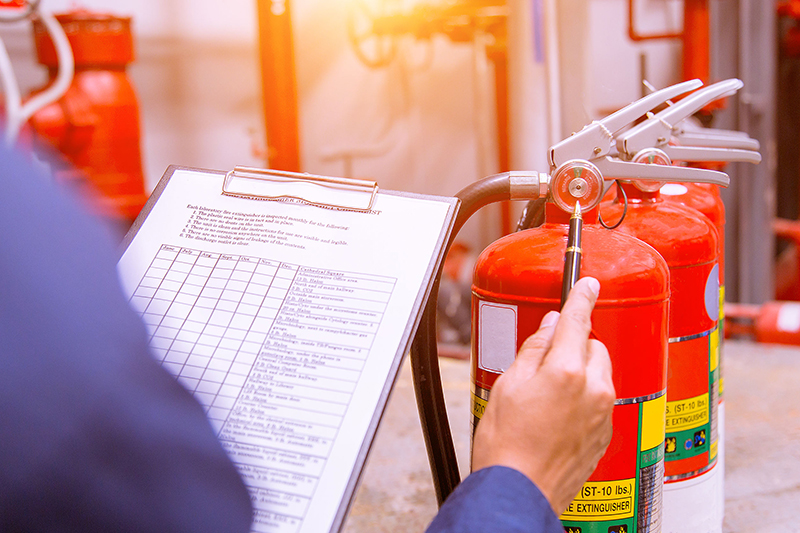
Proper inspections of fire extinguishers are essential to ensure their functionality and reduce the risk of fire spreading. Fire prevention strategies should include regular checks to confirm the extinguisher’s location, pressure gauge, tamper seal, and anti-fire agent.
Emergency preparedness relies on the operational readiness of extinguishers, making extinguisher maintenance a critical aspect of safety protocols. Fire safety training emphasizes the importance of inspecting extinguishers to guarantee they’re fully functional in case of a fire emergency.
Workplace safety protocols mandate the documentation of inspections to ensure compliance with regulations and to uphold a safe working environment. Recognizing the significance of fire extinguisher inspections is key to maintaining a secure environment, whether at home or in commercial settings.
Regular, thorough inspections contribute significantly to fire safety readiness, underscoring the vital role inspections play in preventing and mitigating the impact of fires.
Safety Tips During a Fire Emergency
In a fire emergency, prioritize immediate evacuation for safety. It’s crucial to understand emergency evacuation procedures and have basic fire extinguisher training.
Safety protocols should be followed diligently, emphasizing the safety of individuals over property. Implementing fire safety measures is essential, including knowing when to use a fire extinguisher for small fires and when to evacuate for large or uncontrollable fires.
Educate occupants on fire safety procedures and evacuation plans to ensure a prompt and organized response during emergencies. Regularly inspect safety mechanisms on fire extinguishers, such as the safety pin and seal, to guarantee their proper function in critical situations.
Seeking professional help for fire damage restoration is advised to handle any aftermath effectively. Remember, in a fire emergency, swift and safe actions can make a significant difference.
Frequency of Inspections and Maintenance
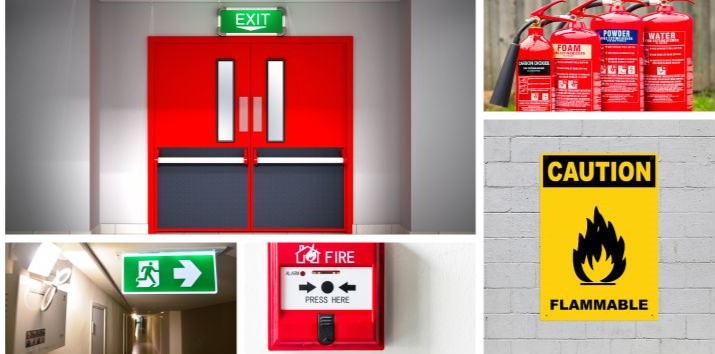
Regular monthly inspections are crucial for ensuring the operational readiness of fire extinguishers in both commercial and residential settings. Commercial buildings in Singapore mandate monthly inspections and servicing to adhere to compliance requirements. Homeowners are advised to inspect fire extinguishers monthly or every two months for safety. Maintenance should be conducted annually to guarantee effective and safe operation.
During inspections, it’s essential to verify safety mechanisms like the safety pin and seal to prevent accidental discharge. Accessibility standards must be upheld, ensuring the fire extinguisher is unobstructed for quick retrieval. Regular checks are necessary to confirm that extinguishers are fully charged and operational.
Both maintenance schedules and inspection intervals play a vital role in maintaining operable fire extinguishers for emergencies. Adhering to these guidelines ensures that fire extinguishers are ready to be utilized when needed, whether in a commercial or residential setting.
Frequently Asked Questions
Can Fire Extinguishers Be Recharged After Use, or Do They Need to Be Replaced?
After use, fire extinguishers can often be recharged. Regular maintenance, like checking pressure gauges and seals, ensures they’re ready for refilling. Inspection checklists help identify reusable components. Consult professionals for guidance on recharging options.
Are There Specific Regulations Regarding the Disposal of Expired Fire Extinguishers?
There are specific regulations for disposing of expired fire extinguishers. Proper handling and recycling options are crucial due to environmental impact and legal considerations. Following disposal regulations ensures compliance and safety for all.
How Often Should Fire Extinguisher Training Sessions Be Conducted for Building Occupants?
Training frequency for building occupants should align with fire safety regulations, emergency preparedness protocols, and occupant education goals. Regular sessions enhance safety measures, ensuring readiness and effective response during fire emergencies.
What Are the Common Signs That Indicate a Fire Extinguisher Needs to Be Replaced, Even if It Hasn’t Been Used?
When inspecting a fire extinguisher, I focus on the inspection checklist, maintenance tips, warning signs, replacement guidelines, and safety considerations. Regular checks ensure readiness. Signs like corrosion, damage, or expired pressure indicate the need for replacement to maintain safety.
Are There Any Specific Requirements for Storing Multiple Fire Extinguishers in Close Proximity to Each Other?
Proper spacing is crucial when storing multiple fire extinguishers. Following storage guidelines ensures accessibility. Regular inspections maintain readiness. Safety precautions include clear labeling and easy access. Maintenance tips involve checking seals and pressure gauges for optimal functionality.
Conclusion
In conclusion, regular fire extinguisher inspections are crucial for ensuring the safety of individuals and properties.
By following the inspection checklist and staying prepared with fire response procedures, we can effectively prevent and respond to fire emergencies.
Remember, safety comes first, so stay proactive and vigilant in maintaining your fire extinguishers to protect yourself and those around you.
Stay safe and be prepared for any situation that may arise.






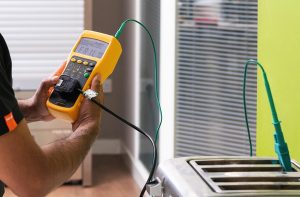
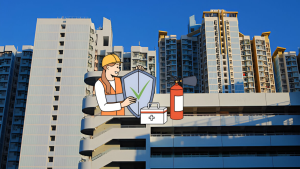
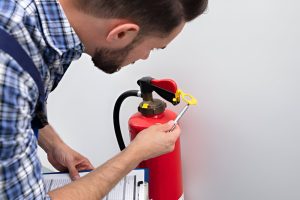
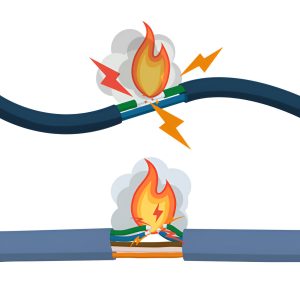

3 thoughts on “How to Inspect a Fire Extinguisher”
I really like it when individuals get together and
share ideas. Great website, continue the good work!
What a fantastic article! The clarity and detail with which you explained the topic are truly commendable. Readers will greatly benefit from the depth of knowledge and useful information presented. It’s evident that your understanding of the subject is profound. Anticipating more of your exceptional work. Thank you for enlightening us with your expertise.
This article is outstanding! I truly appreciate the comprehensive and clear manner in which you covered the topic. Your insights are incredibly valuable, offering a wealth of useful information for readers. It’s evident that you possess a deep understanding of the subject, and I am eager to read more of your work. Thank you for sharing your expertise and knowledge.